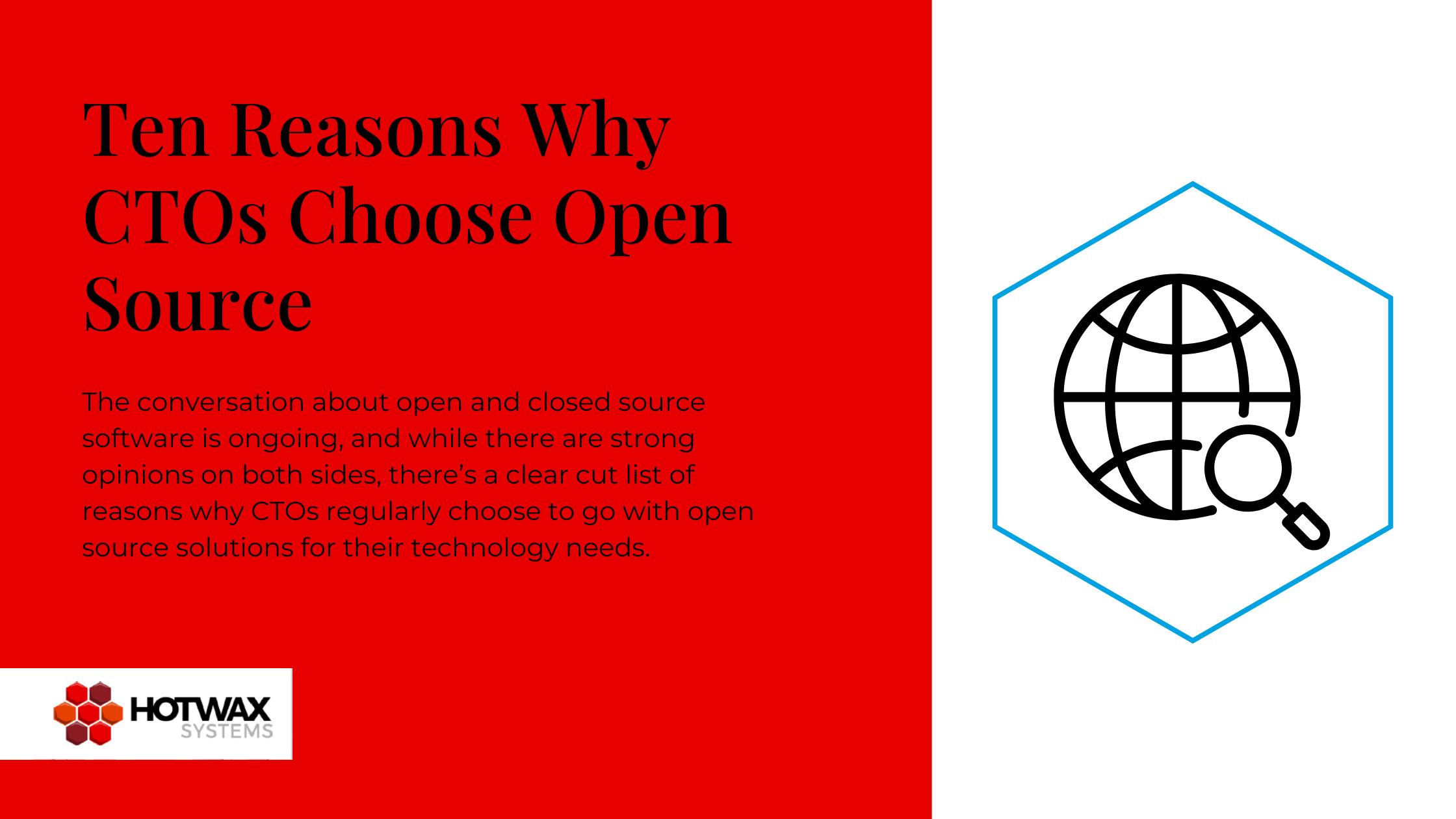The debate between open-source and closed-source software has been around for decades and it doesn't seem to be dying down anytime soon. On one hand, proprietary software advocates point to reliability, vendor support, and polished user experiences. On the other, the open-source camp highlights transparency, flexibility, and freedom from vendor lock-in.
Despite the noise, a growing number of CTOs and tech leaders are making a deliberate shift toward open-source solutions and not just because it’s trendy or cost-effective. They’re doing it for strategic reasons. From scalability and security to long-term adaptability, open-source offers a compelling list of advantages that go far beyond the surface-level buzz.
Let’s break down what is open source software doing that it continues to win the confidence of decision-makers pivoting their organizations’ technology futures.
1. Legacy System Modernization
Legacy systems can be limiting, confusing, and costly to maintain. A complete rip-and-replace, especially with a proprietary replacement system, can be costly and high-risk. Open source software allows for a more gradual, controlled process. This includes the ability to monitor the revision step-by-step so that the approach can be tailored further at any time.
This helps avoid the dreaded, yet much too common, project abandonment problem that plagues the reputation of ERP system overhauls. Way too many enterprises undertake expensive overhauls only to abandon the project after spending hundreds of thousands to millions of dollars. An open source approach can help prevent this.
2. Scalability And Performance
Taking the proprietary route, scalability is limited. Starter systems run out of steam, and scaling requires expensive upgrades or complete system replacements. Open source softwares, on the other hand, can be designed to achieve current needs and also be ready to scale and adjust as businesses grow and requirements change.
This is a great example of “better to have and not need”, though realistically most businesses will need this room to grow and adapt, especially since technology requirements and market demands change too.
3. Integration / Customization
Integrating and customizing multiple proprietary systems can be difficult or even impossible. Open source softwares can allow for seamless integration across a variety of systems, and customization by design.
4. Data Ownership
Especially in businesses dealing with large volumes of customer data, or proprietary data offerings, the ability for the business itself to own its data can be an important requirement. Specifically, open source systems let the CTO control who can access, transfer, backup, and delete critical data.
5. Vendor Lock-in
No long-term contracts or limited flexibility. CTOs can customize, modify, and migrate, freely. They can use their internal team to do some or all of the system maintenance and ongoing development.
This is a huge benefit since it prevents getting locked in to paying for solutions you don’t need, as well as the pain and frustration that comes from realizing you are under a contractual subscription plan that is no longer the right solution for your needs. With no long-term contracts and an abundance of flexibility, open source solutions help keep the path forward towards technology freedom clear.
6. Rapid Prototyping And Innovation
Proprietary software does not allow for rapid experimentation or innovation. Open source software allows companies to experiment with pivots quickly and full ability to customize at will. This can be done with an internal team, an outside service provider, or a combination of both and allows for better problem solving in a shorter timeframe.
7. Security And Compliance
Open source security is superior to closed systems due to transparency and code visibility. A similar argument can be made for changing compliance requirements. If the solution is owned by another organization, you may just not know if the solution is up to date with changing requirements, or if there is adequate prevention / identification / patch activity for threats, and you may not be able to do anything about it anyhow.
An open source system gets rid of this powerlessness and lack of transparency, which translates to better security.
8. Emerging Technologies
By design, open source systems can be forward looking, ready to integrate with new technologies as they emerge and prove valuable. New UX frameworks, approaches to data management, machine learning, etc. This creates a culture and framework of forward innovation that’s missing from proprietary solutions.
9. Knowledge Sharing
The ability to work with the experts and influence the very core of the system you are implementing and running can be a big draw for CTOs. A CTO can gain a feeling of security and control knowing he has some influence over the solution itself.
This is connected to the culture of forward innovation and access to new technologies. While a big draw for CTOs, it’s also a draw for developers, which creates a specialized, diverse talent pool for CTOs to draw from.
10. Cost Reduction
While open source software still requires development and maintenance spending, these costs can be lower than those of proprietary systems. Also, there is the clear savings associated with avoiding ongoing recurring licensing fees.
Also, for implementation and ongoing enhancements and customizations, this spend may be CapEx as opposed to OpEx, which can be preferable in certain circumstances.

Ultimately, the choice between open and proprietary isn’t just about ideology—it’s about what gives your business the edge. CTOs who opt for open-source softwares aren’t just saving on licensing costs; they’re investing in flexibility, control, and the ability to shape their tech stack around their evolving needs. In a world where agility and innovation separate leaders from laggards, open-source solutions have quietly become the go-to playbook for those who want to build smarter, faster, and more resilient systems. The conversation may still be ongoing—but for many tech leaders, the decision is already clear.
If you're evaluating how open source can transform your day-to-day operations as well, connect with us today to build your custom business automation software with open source Apache OFBiz platform.


